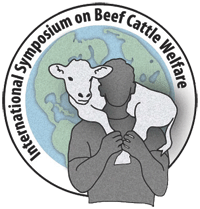Consequences of Ruminal Acidosis
Scientist refutes myth that acidosis occurs primarily among animals receiving a diet that is high in grain relative to forage.
Rumen acidosis can have more far-reaching implications for cattle health than is commonly thought. That was the message shared by University of Saskatchewan animal scientist Greg Penner during the International Symposium on Beef Cattle Welfare, hosted in Saskatoon, SK, June 5-7.

Penner explained that acidosis is a digestive disorder that occurs when the rumen pH declines from the normal range of 6.5-7 to below 5.8. Acute acidosis typically results from an abrupt increase in an animal's intake of feedstuffs that can be rapidly fermented by rumen microbes. This increases acid production and accumulation in the rumen. The low pH environment favors an increase in acid-producing rumen microbes. The result is an imbalance between acid production and the digestive tract's ability to remove acid.
According to Penner, the severity of ruminal acidosis varies from acute to subacute.
Animals with acute acidosis typically exhibit symptoms including refusal of feed, diarrhea, anorexia and even death. Contrary to popular assumption, Penner believes the more common industry problem is subacute acidosis, which may prompt no outwardly visible symptoms.
Penner refuted the myth that acidosis occurs primarily among animals receiving a diet that is high in grain relative to forage.
"It's highly fermentable diets — not necessarily high-grain — that induce the risk," stated Penner, citing research showing acidosis occurs among cattle grazing pasture with minimal supplementation. "It even happens under natural grazing conditions on very lush pasture with highly soluble carbohydrate content," he added.
Penner noted other causes, including a rapid change of diet or a return to feeding after a short period of feed restriction. Not necessarily a consequence of management, the feed restriction could be the result of animals going "off feed" following calving, weaning stress or disease-induced fever. According to Penner, studies also show there is variation among individual animals with some being more or less tolerant of highly fermentable diets.
Penner explained that subacute acidosis has negative health implications resulting from sloughing of epithelial cells from the rumen wall. This decreases its function as a barrier to toxins and pathogens. Absorption of nutrients — primarily energy — may also be impaired.
"Prolonged low rumen pH contributes to a systemic inflammatory response, and affected animals may become more susceptible to secondary infections," stated Penner.
We will be posting more summaries from this conference in the API Virtual Library. Go directly to the page at http://bit.ly/MsqCPv or drill down from www.api-virtuallibrary.com following this path: Meeting Sites → Other Industry Meetings → News Coverage → Click here.

[Click here to go to the top of the page.]











